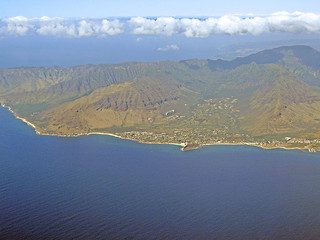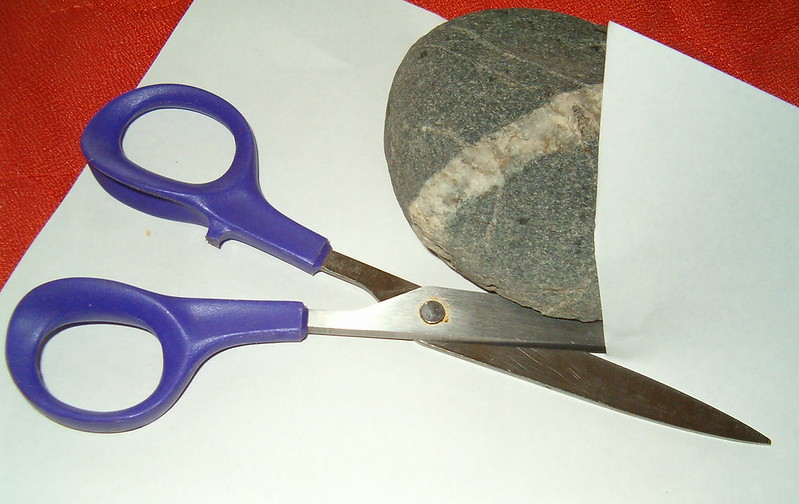
Flickr photo by thomas23 CC BY-NC-SA
The passing of two annual events: Thanksgiving, a time to celebrate the harvest and by extension with family, and Black Friday, an event that encapsulates our consumer economy provided a timely bookend to last month’s conversation on the ‘Ohana Economy.
As a quick recap, the ‘Ohana Economy espouses a focus on management of the household to build ho‘owaiai, or genuine wealth. Last month we specifically saw how a municipal government department is exploring its role in providing support for such an economy through community-based processes to update two community development plans that raise up the vision and values of those communities in order to inform policies to support the industries desired by the community. Accordingly, what might an example of building ho‘owaiwai at a grassroots level to support an iteration of the ‘Ohana Economy look like?
In beautiful Hālawa Valley on the island of O‘ahu, the community-based organization, Nā Kūpuna A Me Nā Kāko‘o O Hālawa struggles to preserve the natural, cultural, and spiritual power of the Valley despite the construction of the H-3 freeway that cuts through the middle of the Valley.
Hālawa Valley is filled with cultural and spiritual structures and artifacts, including the iwi, or cultural remains, of the generations of Native Hawaiian families that called the Valley home. The roots of Nā Kūpuna A Me Nā Kāko‘o O Hālawa is grounded in efforts to protect those remains and artifacts in the active protestation of the highway’s construction. These efforts even saw its leaders—a majority of whom are female—thrown into prison for standing in front of construction equipment to impede their operation.
While the efforts of these women were unsuccessful in stopping the construction of the highway, Nā Kūpuna A Me Nā Kāko‘o O Hālawa now exists to actively preserve, restore, and protect the Valley and the remaining cultural artifacts and sites. Most of this work has been spearheaded on a volunteer basis by those with a historical connection to the land who have then formed relationships and connections to numerous institutions to provide cultural and natural resource training of those volunteers.
Hawaii Alliance for Community Based Economic Development is currently partnered with Nā Kūpuna A Me Nā Kāko‘o O Hālawa to build their organizational capacity for the next generation of cultural practitioners and activists to continue the family tradition while earning a living for themselves and their own growing families. The new leadership faces challenges in learning how to manage and run a nonprofit organization, while maintaining the vision and values of the founders as summarized in the following quote:
Walking in the footsteps of our kūpuna, “mālama ‘āina and ‘āina mālama”
(you put one seed in the ground, you get many in return).
Kūpuna refers to our elders but also encompasses all those who came before us, while mālama means to protect and, ‘āina has been translated to mean land but literally means “that which feeds us” and encompasses those relationships that form the basis for our genuine wealth. The efforts of the new leadership of Nā Kūpuna A Me Nā Kāko‘o O Hālawa aims to perpetuate the current activities of protecting and restoring the land (mālama ‘āina)—which has had a healing effect on those who have taken on those tasks, including prisoners and at-risk youth (‘āina mālama you)—and expand on its cultural and learning opportunities to educational institutions and community groups through the support of traditional cultural practices including providing access for cultural practitioners (you put one seed in the ground, you get many in return).
The older generation of leaders in the organization has been carrying out these efforts on a largely volunteer basis yet sees the importance this work has had in keeping them connected to their formulation of genuine wealth. As the next generation steps up, they are facing the demand of attending school, finding paying work to support their growing families, and face the difficulty of maintaining these traditional cultural practices in light of 21st-century demands.
Just imagine if this up and coming generation could properly manage their household in a way that continues to raise up their traditional cultural practices, maintain relationships with their families, those they serve, and their environment, and be financially secure in the process—a form of the ‘Ohana Economy on the ground.
As work continues, the efforts of the new leadership and the learning that happens as the leadership transition continues will be captured in ongoing documentation that will be summarized in a stewardship and sustainability plan. Such a document will not only capture the stories of the kūpuna, but be a small outcome of a co-learning process we undertake with this next generation of leaders as they try to accomplish a couple of things: iterate a picture of genuine wealth that allows them to care for where they live, which is healing in and of itself; explore doing such work on a full-time basis and financially provide for their families; and thus put one seed in the ground and get many in return in a true sense of thanksgiving.






Comments